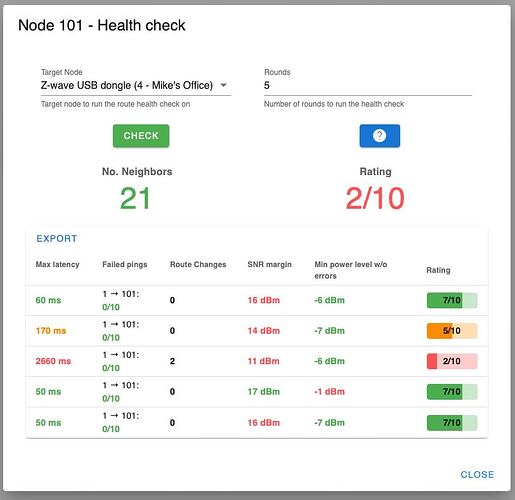Old computer guy here, with some RF experience. There’s another phenomena in RF called “desensing” which can cause all sorts of reliability problems. Basically some kind of “transmitter”, even working at a frequency far away from the one you’re using, can “desense” a receiver that is physically close by, so that the receiver can’t hear anything at all while that transmitter is active.
RF Energy falls away rapidly with distance, but often people try to be “neat” and, for example, put all of their “equipment” in the same closet or shelf, where they are very close together. A transmitter can effectively block all signals that a receiver can otherwide receive just fine when that transmitter is not transmitting.
So many devices now use radio. In addition to the 900MHz Zwave interactions, bluetooth, wifi, “baby monitors”, cameras, appliances, etc., etc. can be occasionally transmitting on some frequency even though you’re not really using them or don’t know that they’re using radio.
Desensing isn’t limited to “radio” transmitters. Even power lines generate RF energy, depending on whether or not current is flowing. A Zwave device on a wall but with a power line hiding just behind the drywall might be affected when that power circuit is in use.
I still remember one nasty “reliability” problem I struggled with for weeks with a computer system I was building. Sometimes it worked, sometimes not. It was only when I finally noticed that it worked, or not, depending on whether or not the room lights were on! That was the clue that led to discovering that there was a defective fluorescent tube in the lab’s ceiling lights, sending out a strong RF signal at something like 40 kilohertz IIRC - which was enough to cause the computer problem.
In another case, I finally noticed that a problem was occurring when a plane flew overhead at a certain time of day. I never found out for sure, but I suspected some particular flight had a plane with a radar issue that caused the problem whenever it was arriving for its daily flight. Grounding everything as I should have in the first place made that problem go away.
So just FYI - a 900MHz spectrum analyzer might find the problem, but if not you might think about other RF sources. Of course the problem might be at either end of a 2-way ZWave conversation, so you have to look at the various devices along the ZWave route in addition to the controller itself. One debugging technique is to turn off things (power them down) in the area, even though they’re not “900 MHz devices”, and see if the problems disappear.
Good luck!




